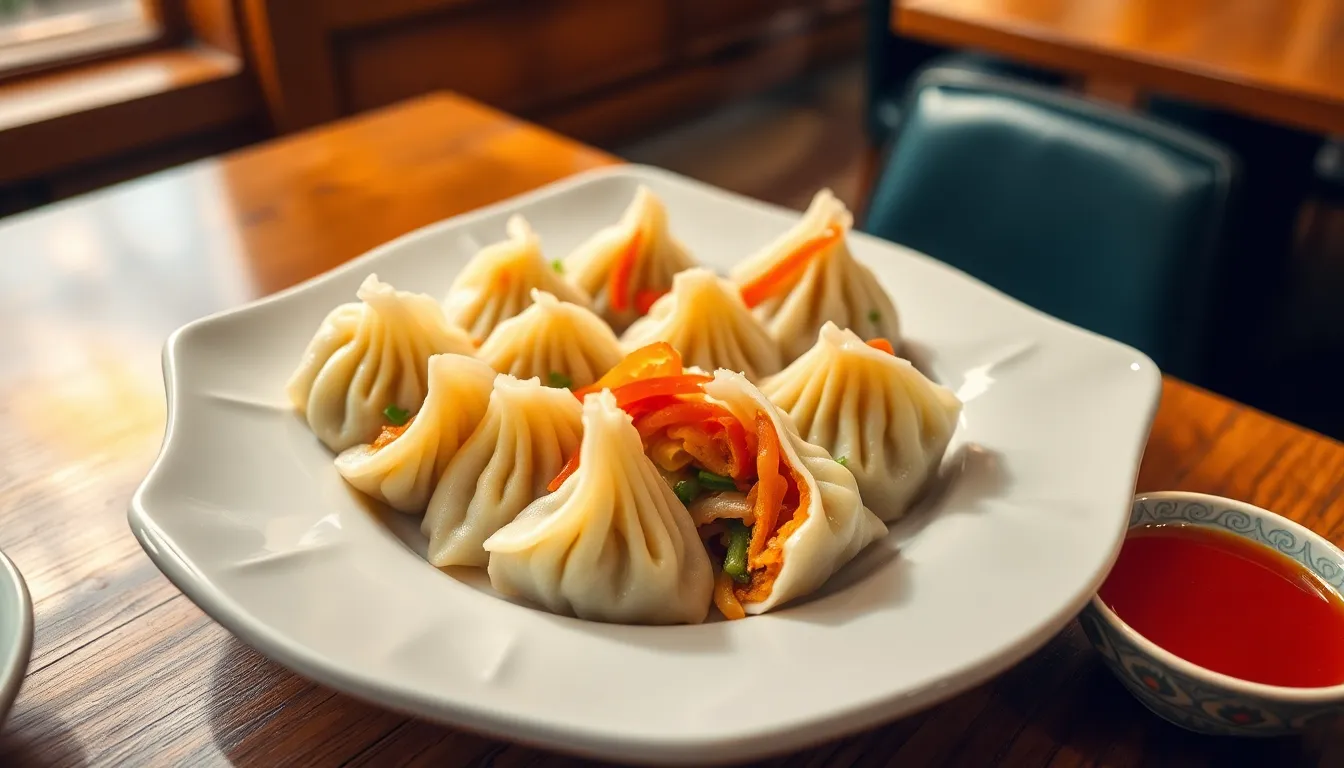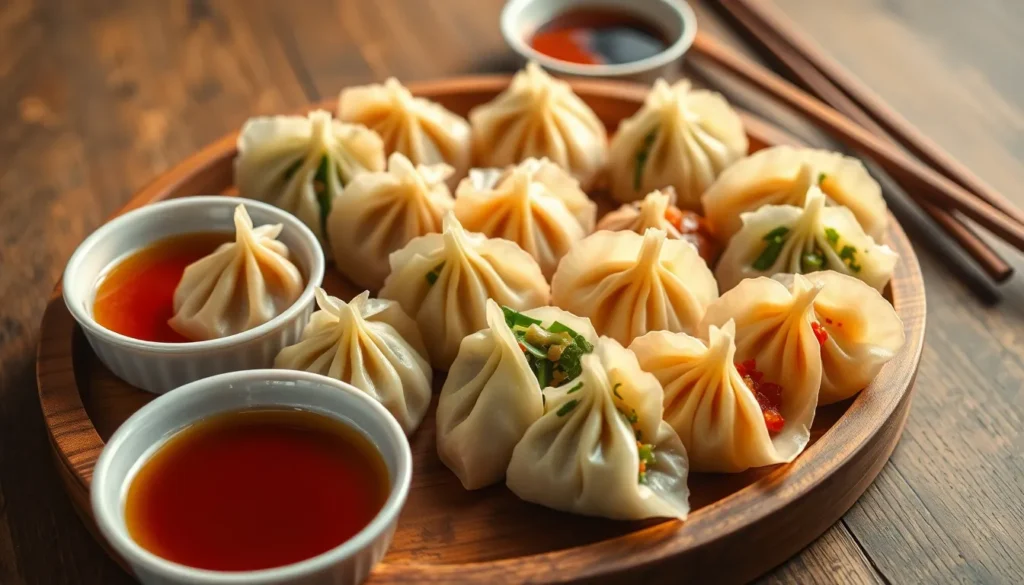Bikimsum might be the culinary equivalent of a cozy blanket on a chilly day—satisfying and oh-so-comforting. But if you’ve ever felt like you’re carrying a brick after indulging in those delicious dumplings, you’re not alone. Many have wondered why this beloved dish seems to take its sweet time to digest.
Why Does Bikimsum Take Long to Digest
Bikimsum stands out as a popular dish due to its unique flavor profile and texture. Ingredients such as dough, meat, or vegetables combine to form flavorful dumplings. The richness of these components contributes significantly to the longer digestion time.
In contrast to lighter meals, bikimsum features dense ingredients like meat and high starch, which require more extensive breakdown in the digestive system. Starch from wheat flour absorbs water, swelling and making digestion slower. Additionally, the combination of protein in the filling necessitates more digestive enzymes, extending the time before one feels comfortable.
Eating speed affects digestion as well. Enjoying bikimsum rapidly might lead to discomfort, given its heavier composition. When consumed slowly, the body can process the meal more effectively. Individuals often report a feeling of fullness that persists longer after indulging, which some may find enjoyable.
Nutrition is another factor in digestion. The presence of fats in certain bikimsum variations adds richness, making them more substantial meals. Fats digest slower than carbohydrates, which can lead to that lingering heaviness post-meal.
Understanding bikimsum’s ingredients and potential effects can help diners make informed choices. Enjoying this delightful dish in moderation allows for appreciation of its comforting qualities while managing digestion effectively.
The Composition of Bikimsum

Bikimsum’s composition plays a significant role in digestion time. Ingredients contribute uniquely to the overall experience.
Ingredients That Affect Digestion
Dough, meat, and vegetables make up bikimsum. Dough primarily consists of wheat flour, which is high in starch. Starch absorbs water, creating a dense mixture that slows digestion. Meat filling contains protein, requiring digestive enzymes for breakdown. Vegetables add fiber, promoting overall digestive health but can also contribute to a feeling of fullness. Fats found in some variations enhance flavor, which also increases digestion time. The combination of these ingredients leads to a rich culinary experience while affecting how quickly one feels light after a meal.
Nutrient Breakdown
Nutrient breakdown significantly impacts digestibility. Protein takes longer to digest compared to carbohydrates. Each serving of bikimsum offers essential proteins and complex carbohydrates, making digestion slower. Starch from the dough interacts with water, leading to swelling that further extends digestion duration. Fats, while providing energy, also require additional time to process. Certain vitamins and minerals contribute to the nutritional profile, helping the body in various ways. Understanding these elements helps diners appreciate bikimsum’s richness and its effects on digestion.
Digestion Process Explained
Understanding how bikimsum digests reveals insights into its complex structure. The body breaks down this dish through several stages, involving mechanical and chemical processes.
How the Body Processes Food
Food enters the mouth, where chewing initiates mechanical breakdown. Once swallowed, bikimsum travels down the esophagus to the stomach. In the stomach, gastric acids and enzymes begin to digest proteins while further mechanical mixing takes place. After the stomach, the chyme moves into the small intestine, where the majority of nutrient absorption occurs. The body’s need for more time in the small intestine reflects the dense ingredients in bikimsum. Both starches from the dough and proteins from the filling require thorough processing, which slows digestion. Lastly, any undigested food particles pass to the large intestine for further breakdown and eventual elimination.
The Role of Enzymes
Digestive enzymes play a crucial role in breaking down the components of bikimsum. Amylases begin breaking down starches in the mouth and continue in the small intestine. Proteases target proteins found in meat fillings, facilitating their breakdown into amino acids. The presence of fiber from vegetables promotes digestive health but necessitates additional enzymes for proper processing. Lipases digest fats, adding another layer of complexity to bikimsum digestion. Each type of enzyme aids in specific breakdown processes, ensuring that nutrients release efficiently. The collective action of these enzymes explains the extended time necessary for complete digestion.
Factors Influencing Digestion Time
Digestion time for bikimsum varies based on several key factors. Individual metabolism and food combinations greatly impact how quickly this dish breaks down in the body.
Individual Metabolism
Each person’s metabolic rate plays a pivotal role in digestion speed. High metabolism allows for quicker processing of food, while slower metabolism prolongs digestion. Age, genetics, and activity levels contribute to these variations. A younger person typically digests bikimsum faster than an older person. Muscle mass also affects metabolic rates; individuals with more muscle often experience swifter digestion. Additionally, hormonal fluctuations can influence digestion, as certain hormones may either speed up or slow down the process. Overall, understanding one’s metabolism helps manage expectations when indulging in bikimsum.
Food Combinations
Food combinations significantly affect digestion time for bikimsum. When consumed with heavy sauces, the richness of the meal increases due to higher fat content. Pairing bikimsum with fibrous vegetables can promote digestive health, but it may also create a feeling of fullness. Combining bikimsum with beverages, such as sugary drinks or alcohol, can lead to slower digestion. These liquids can hinder the body’s ability to efficiently process solid food. Furthermore, the presence of spices may stimulate digestion, but too much can cause discomfort. Monitoring food pairings enhances the enjoyment of bikimsum while minimizing prolonged digestion.
Unique Culinary Experience
Bikimsum offers a unique culinary experience that many cherish. However its rich ingredients and complex composition can lead to longer digestion times. Understanding the factors that contribute to this process allows diners to make informed choices. By eating slowly and being mindful of food combinations, they can enjoy bikimsum without discomfort. Embracing the intricacies of this dish not only enhances the dining experience but also promotes better digestive health. With a little awareness, bikimsum can remain a delightful staple in many meals.

